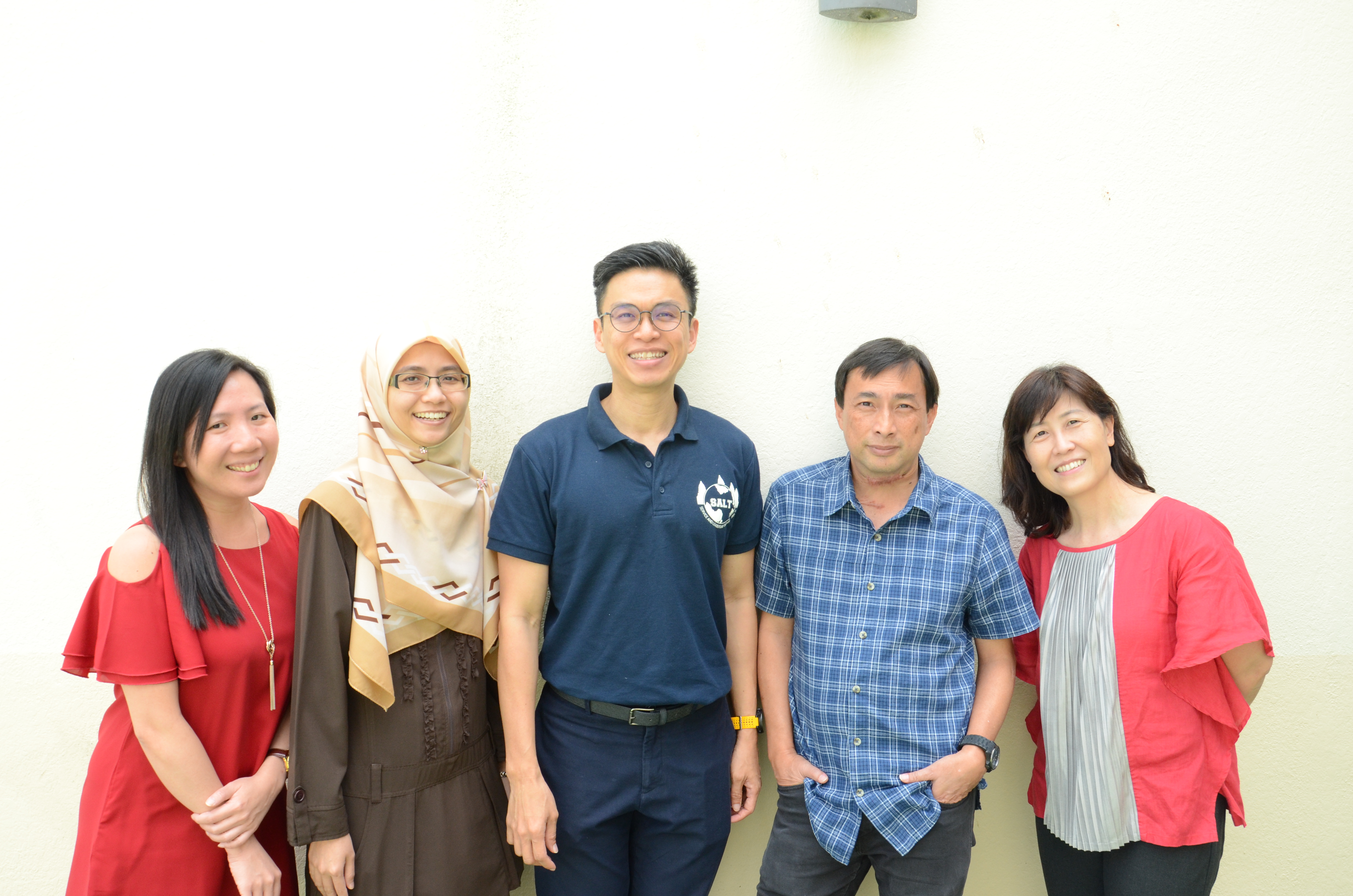Why Singapore’s English Teachers Should Embrace Singlish, Not Fight It
Is it time for Singaporean educators to embrace Singlish as a legitimate learning tool? What the Research […]
Read More
Mention the word “assessment” and many may think of it as a mere process of setting, facilitating and marking exams to benchmark students’ learning. However, one NIE researcher believes that assessment can also go beyond just that, and that when purposefully implemented, it can empower students and motivate them to be active learners.
During his schooling and teaching days, Dr Leong Wei Shin often wondered: How can assessment be used to enthuse, inspire and support learning rather than merely act as a barometer to test students’ understanding of a subject? Now Assistant Professor with NIE’s Curriculum, Teaching and Learning Academic Group, Wei Shin aims to come up with answers through his research study that focuses on classroom assessment in Singapore.

Wei Shin (centre) and his research team believe that assessment should be used as a tool to empower learners.
To do so, Wei Shin first needs to address the existing notion many teachers have about assessment; that it is an approach to benchmark learning. Known as Assessment of Learning, teachers use it interchangeably with summative assessment, which emphasizes the design and use of tests and exams.
“That kind of assessment may create a passive learning culture in which students study for the sake of exams,” Wei Shin shares. “But you don’t actually need to wait for exams to realize that you don’t know certain things.” How, then, can teachers identify and address learning gaps without the use of weighted assessments?
In recent years, Assessment for Learning (AfL) has been more actively introduced into local classrooms by the Ministry of Education. Much like formative assessment (FA) which has been well-known in education since the 1960s, this approach encourages students and teachers to be sensitive to “day-to-day” learning episodes, and to learn for life rather than (just) for examinations.
“(Summative) assessment may create a passive learning culture in which students study for the sake of exams. but you don’t actually need to wait for exams to realize that you don’t know certain things.”
– Wei Shin, on why summative assessment may not serve students’ learning
As part of his research study, Wei Shin worked with some schools in Singapore to find out what teachers understood about AfL, how they were practising it in their classrooms and whether there were additional ways to support them better.
In the first phase, the research team conducted a survey with 13 secondary schools to assess teachers’ perceptions of assessment. “We asked teachers whether they valued certain AfL practices, how often they practised it and how proficient they thought they were, among other questions,” he shares.
The results showed that while these teachers did see the merits of AfL, they were not practising it as frequently as they would like to. They also tend to view themselves as less proficient in implementing AfL practices.
In the second phase, Wei Shin and his team narrowed down the number of schools to observe deeper and understand better on how these teachers implement AfL methods within their respective classrooms. What the team discovered was that teachers’ perceptions and applications of AfL can be sorted into three main categories: tight, broad and atypical.
Found to be the most prevalent type, teachers in the tight category practise AfL in the classrooms with the clear objective to prepare students for examinations. This essentially means that the focus is less on the process of learning, but more on the outcomes (grades).
Teachers in the broad category feel that AfL plays a supporting role in assessing students’ learning in that it encourages them to identify, and learn from their mistakes and progress. They see the value of doing AfL for nurturing learning dispositions.
The last category, atypical, is the rarest, according to Wei Shin. Teachers in this group consciously take their minds off weighted assessments and implement all sorts of classroom activities that are outside of the syllabus to empower students to take charge of their learning, and motivate them to learn for life, instead of for exams.
“We aim to support these teachers in their professional development by getting them to share with us their worksheets and lesson plans before discussing how we can refine them.”
– Wei Shin and his research team hope to provide teachers with the support they need
With ample amount of knowledge and information about teachers’ perceptions and practices of AfL gathered through his research study, Wei Shin and his team are presently working closely with two schools. He provides the teachers involved with research support and encouragement to better implement AfL strategies in their classrooms.
“We aim to support these teachers in their professional development by getting them to share with us their worksheets and lesson plans before discussing how we can refine them,” Wei Shin explains.
The team is also currently video-recording lessons so they can, later as a group, reflect on what aspects of AfL work and do not work in the Singapore context. He hopes that eventually, these videos and analyses can be made available for all teachers to use as part of their professional development through appropriate online sharing portal.
It is only Wei Shin’s hope to nurture teachers who are confident in practising AfL in their classrooms. “Ultimately, my goal is for students to have ownership of their learning through AfL, not only within the classroom but also beyond the classroom,” he concludes.